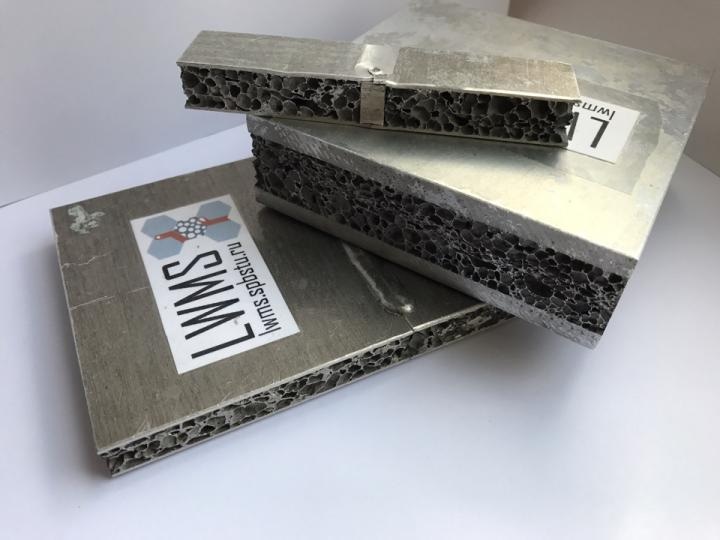Jul 18 2017
Peter the Great St. Petersburg Polytechnic University (SPbPU) has patented a new technology for developing unsinkable material from the aluminum alloy.
 The new technology of producing unsinkable material from the aluminum alloy was patented at the Peter the Great St. Petersburg Polytechnic University (SPbPU). Credit: Peter the Great St. Petersburg Polytechnic University
The new technology of producing unsinkable material from the aluminum alloy was patented at the Peter the Great St. Petersburg Polytechnic University (SPbPU). Credit: Peter the Great St. Petersburg Polytechnic University
The effect of porosity is produced when the foaming gas is added to the liquid metal during re-melting of the aluminum material. The porous materials can be employed to increase the structures stiffness and heat and sound insulating properties, reported the SPbPU's Media-center.
High porosity level can be used to decrease the density of structural elements, e.g. sheets. The density can be decreased even lower than the density of water. Such structural elements will be unsinkable. And its usage in shipbuilding will ensure unsinkability even with the leak in the hull.
Oleg Panchenko, Deputy Head of the Laboratory of Light Materials and Structures SPbPU, one of the Inventors
Most of the time, the carrying capacity of thin materials (1 mm or less) is sufficient for many structures. However, material with this thickness at times has geometric limitations (the thickness is extremely small for manipulation) or it can't be fixed without deformation. Due to the presence of pores in the porous material, it is possible to maintain the weight and increase the thickness and stiffness of the structure.
In Japan, a similar technology has been patented; however, it has a certain feature that generated material will always be entirely porous. SPbPU’s Researchers discovered the way to produce the heterogeneous and homogeneous distribution of pores in the material.
Since it is made up of solid material, it can be either porous if required or with thickening or solid structure. Using the new technology, double-layer sandwiches can be produced, wherein only one side is porous, or areas on the material with better density for welded or mechanical (bolts/studs) joints may be created.